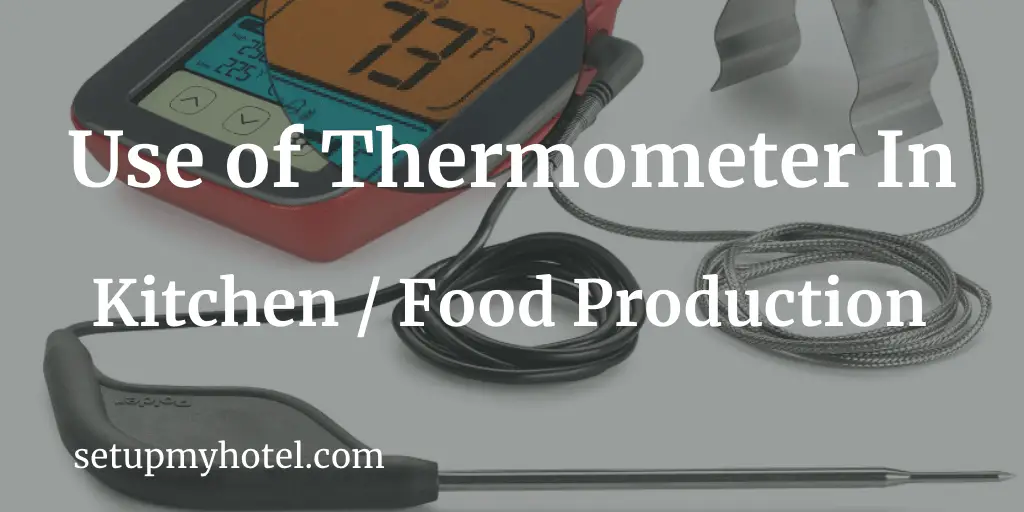What is the use of a Thermometer in the hotel kitchen?
In the food production or kitchen environment microbes are in general the most wanted enemy. Fortunately, most of the microbes grow slowly at refrigerator temperatures and they can be also eliminated or killed if brought up to a higher temperature. For this reason, continuously monitoring and controlling the temperature of the food is very important.
Temperatures will be taken at all steps in the food flow in the kitchen receiving, storing, preparing, cooking, transporting, and serving. Always use calibrated thermometers to ensure the safety of food served to customers. All employees involved in the production or service of food must take temperatures at critical steps throughout the flow of food.
How to Measure the Temperature of Food?
- Use a calibrated thermometer.
- Calibrate thermometers every month, or whenever they are dropped or suffer a shock.
- Sanitize the stem of the clean thermometer with an alcohol wipe or insert the stem into a sanitizing solution for at least 5 seconds, then air dry.
- Insert the end of the sanitized thermometer into one of the appropriate locations, depending on the type of food that needs to be checked.
- Always check the temperature at the thickest part of the product.
- For meat, poultry, or fish the center of the item between two packages of refrigerated or frozen packaged foods until at least 2 inches are submerged.
- For milk and other liquids take the temperature by folding the bag over the stem of the thermometer or probe.
- Make sure the tip of the thermometer does not poke through the food.
- Measure the temperature for at least 15 seconds.
- Read the thermometer and record the temperature on the log book
- Clean and sanitize the stem of the thermometer and store it in an accessible location.
What are the general guidelines for using the thermometer?
- Keep thermometers and their storage cases clean, stored safely, and easily accessible.
- Use bi-metallic stemmed thermometers or digital thermometers.
- Do not use glass thermometers filled with mercury or spirits.
- Wait at least 15 seconds for the thermometer reading to steady before recording the temperature (bi-metallic).
- Take two temperatures in different locations, because product temperatures can vary throughout the food item.
- Insert the thermometer into liquids and hold.
- Do not allow the thermometer’s sensing area or probe to touch the sides or bottom of the container.
- Temperature checks are taken regularly and thermometers are checked for accuracy.
- All refrigerators/freezers must have a working thermometer nearby which is visible from the refrigerator or freezer.











